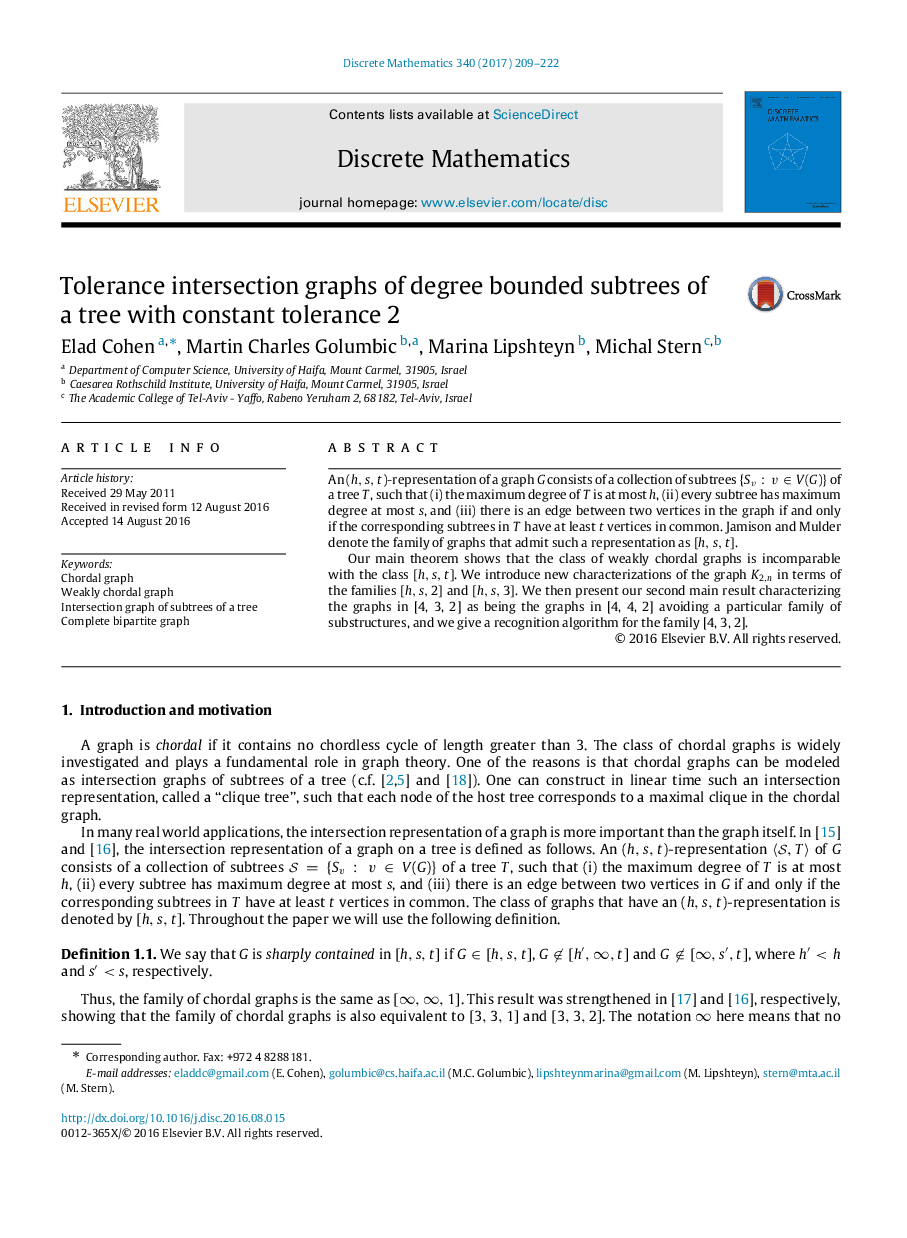| Article ID | Journal | Published Year | Pages | File Type |
|---|---|---|---|---|
| 4646574 | Discrete Mathematics | 2017 | 14 Pages |
An (h,s,t)(h,s,t)-representation of a graph GG consists of a collection of subtrees {Sv:v∈V(G)} of a tree TT, such that (i) the maximum degree of TT is at most hh, (ii) every subtree has maximum degree at most ss, and (iii) there is an edge between two vertices in the graph if and only if the corresponding subtrees in TT have at least tt vertices in common. Jamison and Mulder denote the family of graphs that admit such a representation as [h,s,t][h,s,t].Our main theorem shows that the class of weakly chordal graphs is incomparable with the class [h,s,t][h,s,t]. We introduce new characterizations of the graph K2,nK2,n in terms of the families [h,s,2][h,s,2] and [h,s,3][h,s,3]. We then present our second main result characterizing the graphs in [4, 3, 2] as being the graphs in [4, 4, 2] avoiding a particular family of substructures, and we give a recognition algorithm for the family [4, 3, 2].
